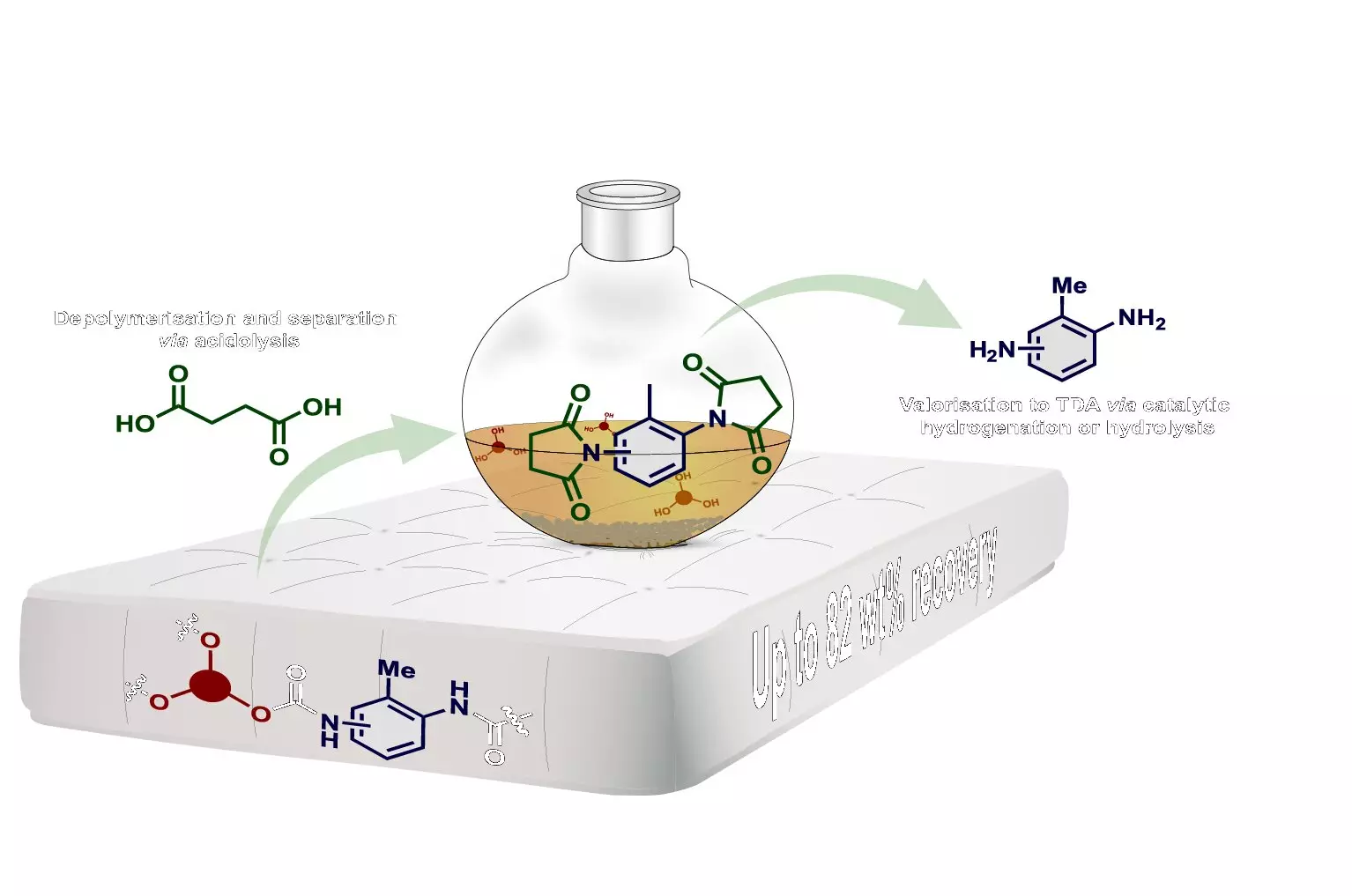Polyurethane (PUR) is a versatile plastic material that is widely used in various industries, from mattresses to wind turbine blades. However, the disposal of PUR products has become a significant environmental and climate burden. Most of the discarded PUR products end up being incinerated or dumped in landfills, contributing to pollution and resource depletion.
With the global market for PUR products steadily growing, finding a sustainable solution for recycling the material has become imperative. A small but growing industry has emerged that aims to chemically break down PUR into its original components, polyol and isocyanate, for reuse in new products. However, the process of separating and purifying these elements is costly, making it difficult for recycled materials to compete with virgin materials.
Researchers at Aarhus University have developed a groundbreaking method for recycling flexible PUR foam. By heating the foam to 220°C in a reactor with succinic acid, they are able to break down the material and separate it into polyols and diamines. This innovative approach allows for the recovery of up to 82% of the original material from the foam, which can then be used as raw materials in new PUR products.
While the new recycling method shows great promise, there are still challenges that need to be addressed before a circular economy in polyurethane can be achieved. Waste sorting, logistics, and sorting PUR into types are some of the key obstacles that need to be overcome. Manufacturers in the PUR industry also need to collaborate to develop standardized recycling processes that can be applied across different products.
In addition to flexible PUR foam, the researchers at Aarhus University are also testing the recycling method on regenerated PUR foam and rigid PUR foam. While the process has shown promising results, the path to a circular economy for rigid PUR foam is still in its early stages. The researchers are exploring ways to reuse dicarboxylic acid and testing the recycled materials to develop new products that can demonstrate the technology’s potential in creating a sustainable recycling loop.
The breakthrough in recycling polyurethane foam represents a significant step towards a more sustainable future for the industry. By developing innovative methods to recover and reuse PUR materials, researchers are paving the way for a circular economy that minimizes waste and reduces the environmental impact of plastic production. With further advancements and collaborations within the industry, the vision of a truly sustainable PUR industry may soon become a reality.


Leave a Reply